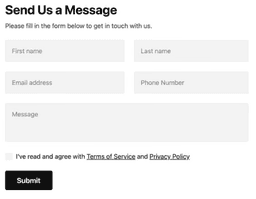Pygame vs Tkinter – A Consumer’s Perspective
For programming aficionados beginning their journey, Pygame is ideal due to its simplicity and expansive cross-platform capabilities, making it a preferred choice for game development. When a preference leans towards GUI creation, however, Tkinter being Python’s standard GUI earns the spotlight, with its smooth integration and vast widget selection.

Key Differences Between Pygame and Tkinter
- While Pygame specializes in real-time game development, Tkinter excels at GUI creation.
- Pygame’s modules prove beneficial for creating video games, while Tkinter harbors standard Python interface to Tk GUI toolkit.
- Python, C, Cython, Assembly are the pillars of Pygame’s code, on contrary, Tkinter functions primarily with Python.
- Pygame offers an expansive cross-platform versatility that includes handheld devices and game consoles, Tkinter, however, as a standard Python GUI, is default in Linux, Windows, and macOS Python installs.
| Comparison | Pygame | Tkinter |
|---|---|---|
| Languages | Python, C, Cython, Assembly | Python |
| License | GNU Lesser General Public Library | Python Software Foundation license |
| Platform Compatibility | Android, AmigaOS, Dreamcast, Atari, AIX, OSF/Tru64, RISC OS, SymbianOS, and OS/2 | Linux, Windows, macOS |
| Ease of Use | Beneficial for beginners, lessons for young kids, college students, first-time programmers | Standard GUI for Python |
| Installation | Comes with installers for Windows and macOS | Included with standard Linux, Windows, macOS Python installs |
| Functionality | Useful for vector math, collision detection, 2D sprite scene graph management, MIDI support, pixel-array manipulation and transformations | Themed Tk functionality, mix between Python and Tcl |
What Is Pygame and Who’s It For?
Pygame is a collection of Python modules, tailor-made for designing video games. It was introduced on October 28, 2000, and as of June 2023, it stands at a stable release version 2.5.0. Designed with cross-platform capabilities in mind, Pygame is compatible with various platforms, including Android, through Pygame Subset for Android. Its acclaimed simplicity and ease of use make it a fitting tool for beginners, young kids, college students, and first-time programmers without compromising on the capability to craft complex games such as Frets on Fire and Drawn Down Abyss.

Pros of Pygame
- Highly portable and runs on nearly every operating system.
- Community-driven development with plenty of user-made tutorials.
- Eases real-time game development with Simple DirectMedia Layer (SDL).
- Excellent for novel programmers considering its simplicity and accessibility.
Cons of Pygame
- Limited to 2D game development.
- The performance may be insufficient for larger or more complex games.
- Community support, while considerable, doesn’t match mainstream game development platforms.
- Relatively low adoption for commercial game creation.
What Is Tkinter and Who’s It For?
Tkinter serves as the standard Python interface to the Tk GUI toolkit. Frequent in the fold of standard Python installs across Linux, Windows, and macOS, Tkinter was developed by Steen Lumholt and Guido van Rossum. Known as the de facto standard GUI of Python, it wellness in different domains, including desktop applications, games, prototypes, and real-world applications. Tkinter’s appeal resonates not just with professional developers but also hobbyists and beginners who aim for a convenient, intuitive GUI toolkit.

Pros of Tkinter
- Included with standard Python installation which nullifies the need for additional downloads.
- Enables developers to create highly customizable and functional GUIs.
- Provides a wide range of widgets for application development.
- It supports an object-oriented paradigm enhancing its usability.
Cons of Tkinter
- The look and feel might not be as modern or elegant as some other GUI libraries.
- Lack of certain widgets which are common in various other toolkits.
- Documentation is less detailed compared to alternatives.
- Community support is less than that of other popular Python libraries.
Code Examples for Pygame & Tkinter
Pygame
This code snippet creates a simple animation of a bouncing ball using Pygame. Prior to execution of the code, please ensure Pygame library is installed in your Python environment.
import pygame, sys
from pygame.locals import *
pygame.init()
DISPLAY=pygame.display.set_mode((500,400),0,32)
WHITE=(255,255,255)
BLUE=(0,0,255)
DISPLAY.fill(WHITE)
x=200
y=200
direction = 'right'
while True:
for event in pygame.event.get():
if event.type == QUIT:
pygame.quit()
sys.exit()
if direction == 'right':
x += 5
if direction == 'down':
y += 5
if direction == 'left':
x -= 5
if direction == 'up':
y -= 5
if x == 290:
direction = 'down'
if y == 290:
direction = 'left'
if x == 10:
direction = 'up'
if y == 10:
direction = 'right'
DISPLAY.fill(WHITE)
pygame.draw.rect(DISPLAY,BLUE,(x,y,100,50))
pygame.display.update()Tkinter
This Tkinter code displays a window with a button that initiates a Label saying “You clicked the button!”. Ensure that your Python environment has Tkinter installed to correctly execute the code.
import tkinter as tk
from tkinter import Message
def button_clicked():
lbl = Message(root, text = "You clicked the button!")
lbl.pack()
root = tk.Tk()
root.title("Tkinter Example")
button = tk.Button(root, text="Click me!", command = button_clicked)
button.pack()
root.mainloop()The Gaming Arena: Pygame vs Tkinter – Which to Choose?
In the Python world, Pygame and Tkinter have emerged as two compelling forces in GUI creation. But when the lines are blurred, let’s shed light on the best framework for your needs.
The Budding Developer
For aspirants cutting their teeth in programming and GUI development, Pygame stands out as the superior choice. Uncomplicated, with a community-driven development ecosystem and a wealth of tutorials, its optimal simplicity beats Tkinter. Not to mention, Pygame’s performance speed significantly outspecs Tkinter, courtesy of its underlying Assembly Language.

The Mobile App Innovator
When it comes to Android app development, Pygame takes the cake. With unmatched Android compatibility, enhanced features like sound, vibration, keyboard, and accelerometer support, Pygame is your go-to option to script revolutionary apps.

The Cross-Platform Maestro
Creating stunning cross-platform applications? Opt for Pygame. Its acclaimed portability gives it the edge over Tkinter, running smoothly across myriad systems like handheld devices, game consoles, or OLPC computers.

The Casual GUI Creator
Tkinter, Python’s de facto standard GUI, stands out as the perfect pick for casual GUI creators. Swiftly place and configure widgets while enjoying the power of Python’s standard GUI toolkit. Also, it shines with its object-oriented paradigm and native theming capabilities.

To sum up, while Pygame rules the gaming arena with superior speed, widespread portability, and Android compatibility, Tkinter retains its worth with Python’s standard GUI and an intuitive toolkit for casual creators.







